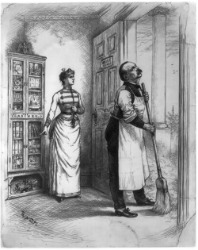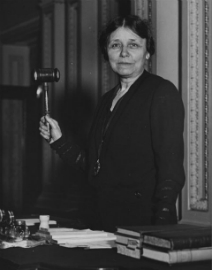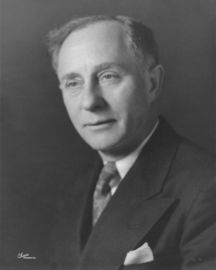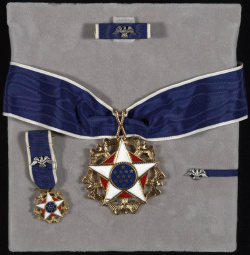1803

With the Louisiana Purchase, the United States acquired nearly 800,000 square miles of land, extending from the Mississippi River to the Rocky Mountains, including the area forming the present state of Arkansas.
1812
The Senate approved a bill setting aside land in the Louisiana Territory between the St. Francis and Arkansas Rivers (present day Arkansas and Missouri) for military land bounties. These land grants were to be given in 160-acre parcels to soldiers and non-commissioned officers who served five years in the army, thereby encouraging settlement of the sparsely-populated region.
1819
The Senate passed "An act establishing a separate territorial government in the southern part of the territory of Missouri." The bill became law the following day and created the Territory of Arkansas.
1836

William S. Fulton of Little Rock and Ambrose H. Sevier of Lake Port presented their credentials and took their oaths of office as Arkansas' first two United States senators. The two senators then drew lots to determine class assignments. Senator Sevier drew Class 1, for a term to expire on March 3, 1837. Senator Fulton drew Class 3, for a term to expire on March 3, 1841.
1840

Ambrose H. Sevier became chairman of the Senate Committee on Indian Affairs, a position he held from 1840 to 1841, and again from 1845 to 1846.
1845

Chester Ashley of Little Rock, elected to the Senate in 1844, became chairman of the Senate Committee on the Judiciary, a position he held from 1845 to 1847.
1846
Ambrose H. Sevier became chairman of the Senate Committee on Foreign Relations, a position he held from 1846 to 1848.
1848

The U.S. signed the Treaty of Guadalupe Hidalgo following the U.S.-Mexican War. Among the U.S. delegation to negotiate the treaty was Senator Ambrose H. Sevier. With the signing of the treaty, Mexico ceded to the United States the territory that now makes up the southwestern states. On March 15, Sevier resigned from the Senate to serve as minister to Mexico.
1853

William K. Sebastian of Helena, who began his Senate service in 1848, became chairman of the Senate Committee on Indian Affairs, a position he held from 1853 to 1861.
1861

Robert W. Johnson of Pine Bluff briefly became chairman of the Senate Committee on Military Affairs (today's Armed Services Committee). The chairman of the committee, Senator Jefferson Davis of Mississippi, and its next ranking member, Senator Benjamin Fitzpatrick of Alabama, had both withdrawn from the Senate on January 21 after their states had seceded from the Union.
1861

The Senate expelled William K. Sebastian of Helena and Charles B. Mitchel of Little Rock and declared Arkansas' Senate seats vacant. The state's two seats remained vacant until 1868.
1868

After Arkansas was allowed to resume representation in the U.S. Congress following the Civil War, Alexander McDonald and Benjamin F. Rice, both of Little Rock, took the oath of office as U.S. senators.
1886

The Senate passed a resolution of condemnation against Attorney General (and former senator) Augustus H. Garland following his refusal to provide information to a Senate committee.
1893

James K. Jones of Washington became chairman of the Senate Committee on Indian Affairs, a position he held from 1893 to 1895.
1899
Senator James K. Jones became chairman of the Democratic Conference, a position he held from 1899 to 1903.
1913

The Senate elected James P. Clarke of Little Rock as president pro tempore. Clarke served two separate terms as president pro tempore between 1913 and 1916.
1913

James P. Clarke became chairman of the Senate Committee on Commerce (today's Committee on Commerce, Science, and Transportation), a position he held from 1913 to 1916.
1913

The Seventeenth Amendment to the U.S. Constitution went into effect allowing the election of U.S. senators by popular vote. James P. Clarke of Little Rock, a member since 1903, became Arkansas' first directly elected senator, winning reelection in 1914.
1917

Congress accepted a marble statue of Uriah M. Rose sculpted by Frederic W. Ruckstuhl for the Capitol's National Statuary Hall Collection. The statue was replaced by one of Daisy Bates in 2024.
1921

Congress accepted a marble statue of James P. Clarke, by artist Pompeo Coppini for the Capitol's National Statuary Hall Collection. The statue was replaced by one of Johnny Cash in 2024.
1923

The Senate Democratic Conference elected Joseph T. Robinson of Little Rock as floor leader, a position he held until his death on July 14, 1937. Robinson served as majority leader from 1933 to 1937. Simultaneously, he served as chairman of the Democratic Conference.
1928

Senator Joseph T. Robinson ran unsuccessfully for vice president of the United States on the Democratic ticket with Alfred E. Smith.
1931

Hattie W. Caraway of Jonesboro was appointed by Arkansas governor Harvey Parnell to fill the seat left vacant by the death of her husband, Senator Thaddeus H. Caraway. Subsequently elected in a special election on January 12, 1932, she became the first woman elected to the U.S. Senate. She was elected to a full term in 1932 and reelected in 1938, and served until January 3, 1945.
1932

Long-shot Senate candidate Hattie Caraway began an extraordinary nine-day campaign tour across Arkansas with popular senator Huey P. Long of neighboring Louisiana. The highly publicized "Hattie and Huey tour" resulted in a landslide victory for Caraway.
1937

The Senate acquired a portrait of Senator Joseph T. Robinson, who died in office on July 14, 1937. The portrait was painted by Nicholas Brewer in 1934, shortly after the senator's selection as majority leader.
1940

Without ceremony, an oil portrait of Illinois senator J. Hamilton Lewis by Arkansas native Louis Betts was hung in the U.S. Capitol. The exact date that Betts painted the portrait is unknown, but it was likely copied from a 1940 photograph of Lewis.
1943

On October 19, 1943, for the first time, a woman formally took up the gavel as the Senate's presiding officer. In the absence of the vice president and the president pro tempore, the secretary of the Senate read a letter assigning the duties of the chair to Arkansas Democrat Hattie W. Caraway.
1945

The Senate elected Leslie Biffle, who grew up in Piggott, Arkansas, as secretary of the Senate, a position he held from February 8, 1945, to January 4, 1947, and again from January 3, 1949, to January 3, 1953.
1951

John L. McClellan of Camden became chairman of the Senate Committee on Expenditures in the Executive Departments, which became the Committee on Government Operations in 1952 and then the Committee on Homeland Security and Governmental Affairs in 2005. Senator McClellan held the chairman position from 1952 to 1953 and again from 1955 to 1972.
1955

J. William Fulbright of Fayetteville became chairman of the Senate Committee on Banking and Currency (today's Committee on Banking, Housing, and Urban Affairs), a position he held from 1955 to 1961.
1959

J. William Fulbright became chairman of the Senate Committee on Foreign Relations, a position he held until 1974. As chair of this influential committee, Fulbright conducted "educational hearings" on America's role in the Vietnam War in the late 1960s and early 1970s, criticizing the presidential administrations of Lyndon B. Johnson and Richard M. Nixon and influencing public opinion.
1967

John L. McClellan became Arkansas's longest-serving senator, surpassing the record of 24 years, 4 months, and 1 day set by Joseph T. Robinson in 1937. McClellan went on to serve for 34 years and 11 months.
1972
John L. McClellan became chairman of the Senate Committee on Appropriations, a position he held from 1971 to 1979. McClellan replaced the previous chairman, Louisiana senator Allen J. Ellender, who had died in office the previous week.
1982
Future senator Blanche L. Lincoln of Helena became staff assistant to Representative William V. Alexander Jr. of Arkansas, a position she held for two years. Lincoln was elected to the U.S. House of Representatives in 1992 and served two terms. She was elected to the U.S. Senate in 1998.
1987

Dale Bumpers of Charleston became chairman of the Senate Committee on Small Business (now the Committee on Small Business and Entrepreneurship), a position he held from 1987 to 1995.
1988

Senator David H. Pryor of Little Rock was elected secretary of the Democratic Conference, a position he held until 1995.
1993

Former senator J. William Fulbright received the Presidential Medal of Freedom, the highest civilian award given in the United States. In awarding the medal to Fulbright, President Bill Clinton recognized the former senator's long legislative career and his role in establishing the Fulbright academic exchange program.
1996

The Senate unveiled a commissioned portrait of Hattie W. Caraway, the first woman elected to the U.S. Senate. The portrait was painted by Little Rock artist John Oliver Buckley.
1998

Senator Timothy Hutchinson of Bentonville received the Golden Gavel Award for presiding over the Senate for 100 hours in a single session.
1999

Blanche L. Lincoln of Helena took the oath of office, becoming the second woman to represent Arkansas in the U.S. Senate.
2001
Senator Hattie W. Caraway was featured on a U.S. postage stamp, one of the "Great Americans" series.
2008

Senator Mark Pryor of Little Rock delivered George Washington's Farewell Address on the floor of the Senate, a tradition dating back to the 1880s.
2016

Senator Tom Cotton of Dardanelle received the Golden Gavel Award for presiding over the Senate for 100 hours in a single Congress. Cotton earned a second Golden Gavel Award on November 27, 2018.
2020

Senator John Boozman of Rogers received the Golden Gavel Award for presiding over the Senate for 100 hours in a single Congress.
2024

A bronze statue of Daisy Lee Gatson Bates by artist Benjamin Victor was unveiled at the Capitol as part of the National Statuary Hall Collection. The statue replaces one of Uriah Rose that was unveiled in 1917.
2024

A bronze statue of Johnny Cash by artist Kevin Kresse was unveiled at the Capitol as part of the National Statuary Hall Collection. The statue replaces one of James P. Clarke that was unveiled in 1921.
2025
Senator John Boozman became chairman of the Senate Committee on Agriculture, Nutrition, and Forestry, and Senator Tom Cotton became chairman of the Senate Select Committee on Intelligence.